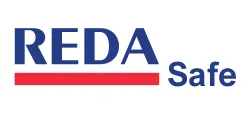10 Essential Tips for Fabricators to Stay Cool in Hot Conditions

Takeaway
Utilize these five tips for workers and five tips for managers to maintain a cool environment in fabricating and manufacturing shops this summer.
Introduction
As summer temperatures soar, concerns for workers' safety in manufacturing and fabrication facilities increase. The combination of intense sunlight, heat from machinery, and physically demanding work creates a sweltering environment for fabricators. This heat stress not only impacts productivity but can also lead to serious health issues for workers.
Heat should never be underestimated. Excessive temperatures can cause fatigue, reduced energy levels, and muscle cramps, while also putting significant strain on the heart and lungs.
Although OSHA does not have specific regulations for indoor temperature and humidity, the OSHA Technical Manual recommends maintaining temperatures between 68-76 degrees Fahrenheit and humidity between 20-60 percent. Additionally, the American Conference of Governmental Industrial Hygienists advises that workers should not be allowed to work when their core body temperature exceeds 100.4 degrees Fahrenheit (38 degrees Celsius).
Various Heat-Related Illnesses
There are four primary types of heat-related illnesses: heat exhaustion, heat stroke, heat rash and heat cramps. Each condition can progress to a more severe state if early symptoms are overlooked. Ignoring the signs of milder heat illnesses can lead to more serious health issues.
Heat Exhaustion
Heat exhaustion arises when the body sweats excessively, paired with a rapid pulse, causing the body to overheat and struggle to cool down. This condition occurs in high temperatures with high humidity, strenuous physical activity, and often dehydration. There are two types of heat exhaustion: water depletion and salt depletion. Symptoms of water depletion include excessive thirst, weakness, headache, and fainting. Salt depletion symptoms include nausea, vomiting, muscle cramps, and dizziness. Common signs also include cool, moist skin, headache, nausea, weakness, and dizziness.
Heat Stroke
Heat stroke is the most severe form of heat-related illness. It occurs when the body’s core temperature exceeds 104 degrees Fahrenheit and the nervous system is affected. Prolonged exposure to high temperatures, usually combined with dehydration, overwhelms the body’s heat-regulating system. Heat stroke can cause damage to the brain and other internal organs and can be fatal in severe cases. Symptoms include very high body temperature, excessive sweating or red, hot, dry skin, confusion, fainting, or seizures. This life-threatening condition requires immediate medical attention.
Heat Rash
Heat rash, also referred to as prickly heat, occurs when the skin feels prickly or stings due to overheating. It develops in hot and humid conditions when blocked pores trap sweat under the skin, leading to superficial blisters. Typically, heat rash improves once the skin cools down. Although it often clears up on its own, some cases may require medical attention.
Heat Cramps
Heat cramps are painful, involuntary muscle spasms that occur in individuals who are physically active in high temperatures. Excessive sweating during exercise or manual labor increases the risk of heat cramps. These cramps are often caused by significant fluid and electrolyte loss due to heavy sweating.
Fortunately, there are numerous precautions that workers and managers can take to ensure safety in fabrication environments during the hot season. Read on for five tips for managers and five tips for employees to beat the summer heat.
Managerial Guidelines for Heat Management
Effectively managing heat in the workplace is essential for ensuring the safety and productivity of employees. Managers play a crucial role in implementing strategies that mitigate heat-related risks. The following guidelines provide essential steps for educating workers, monitoring for symptoms, improving ventilation, enforcing breaks, and optimizing work schedules to combat heat stress.
1- Educate Employees
Ensure that your team understands the risks associated with heat stress, how to identify its symptoms, how to treat it, and how to prevent it. Educate them on the serious dangers of heat stroke and heat exhaustion and provide practical advice on avoidance. Distribute OSHA's "Protecting Workers from Heat Stress" quick cards as a reference tool.
2- Monitor for Heat Illness Symptoms
Even with proper education, it’s crucial for managers to be vigilant in recognizing signs of heat illness among employees. Regularly check on your team, observe for symptoms, and note any changes in behavior. Encourage workers to remain alert to these symptoms and emphasize the importance of taking them seriously.
3- Enhance Ventilation and Air Circulation
Make sure your fabrication shop is effectively removing hot air from the facility. Use air conditioning, portable fans, ceiling fans, exhaust fans, and high-volume low-speed (HVLS) fans to improve air circulation. Proper ventilation helps to reduce stagnant, hot, and humid air pockets, maintaining a safer temperature.
4- Enforce Regular Breaks
While completing tasks efficiently is important, it should not come at the expense of workers' health. Overexertion without adequate breaks can lead to severe health issues, reducing overall productivity. Schedule regular breaks throughout the day and consider making them mandatory to ensure employees have time to cool down and hydrate.
5- Optimize Work Schedules
If possible, adjust work schedules to avoid the hottest parts of the day. Starting work earlier can help you avoid peak heat periods. Alternatively, consider having shifts start later in the day when temperatures are cooler. If adjusting schedules isn’t feasible, ensure frequent breaks are mandatory to safeguard workers’ health in high-heat conditions.
Employee Guidelines for Managing Heat
Staying cool and safe in high-temperature work environments requires proactive measures. Employees can significantly reduce the risk of heat-related illnesses by following these essential guidelines. These tips cover hydration, nutrition, break schedules, appropriate clothing, and symptom monitoring to help maintain health and productivity during hot conditions.
1- Maintain Hydration
Dehydration significantly contributes to heat-related illnesses. Regularly drink cool liquids rich in salts and electrolytes, such as coconut water or sports drinks, to replace fluids lost through sweating. Additionally, drinking water consistently helps prevent dehydration before you feel thirsty. Keep a water bottle at your workstation to stay hydrated throughout your shift.
2- Consume Nutritious Meals
High-fat, high-carbohydrate, heavy, and greasy foods can cause bloating and nausea. Choose lighter meals that satisfy hunger without causing discomfort, such as a sandwich instead of a burger. To replenish fluids and sodium, select watery foods with salt and potassium, like soup and vegetable juices. Fruits and vegetables are also excellent sources of water. For more options, check out this list of 19 hydrating foods.
3- Schedule Regular Breaks
Taking breaks is essential for maintaining mental well-being and overall work performance, especially in hot conditions. When the body cannot release enough heat to balance the heat generated by physical work and external sources, it struggles to cool down. Regular breaks can prevent your body from overheating.
4- Wear Suitable Clothing
While shorts and sandals may not be appropriate for a fabrication shop, wearing breathable and lightweight materials is advisable. Cotton, linen, and silk fabrics are excellent for absorbing sweat and allowing the skin to breathe, making them ideal for hot environments.
5- Monitor for Symptoms
Being aware of the signs and symptoms of heat-related illnesses enables you to recognize them in yourself and others. If you or a coworker start exhibiting symptoms, move to a cool area and rehydrate immediately. Always take these symptoms seriously, as they can lead to severe health issues.
Immediate Actions for Heat-Related Illnesses
Heat-related illnesses are serious and require immediate attention. Despite preventive measures, these conditions can still occur. If you experience symptoms of heat stress, follow these steps:
- Cease physical activity and rest in a cool area.
- Rehydrate with fluids containing salts and electrolytes to replenish moisture lost through sweating.
- Apply cool compresses to help lower body temperature.
- If heat stroke is suspected, seek emergency medical assistance immediately.
Conclusion
Effectively managing heat in manufacturing and fabrication environments is crucial for ensuring the safety and productivity of all employees. By implementing the outlined tips and guidelines, both workers and managers can take proactive steps to mitigate the risks associated with high temperatures. Educating employees, monitoring for symptoms, improving ventilation, enforcing regular breaks, and optimizing work schedules are key strategies in preventing heat-related illnesses. Remember, staying hydrated, eating nutritious meals, and wearing suitable clothing also play vital roles in maintaining a safe and comfortable work environment. With these measures in place, fabricators can continue to work efficiently and safely throughout the hot summer months.
For more information on managing heat stress and to explore our range of safety products, visit our Heat Stress Hazard page.
Related Articles
- Hydration Hurdles: 4 Challenging Work Environments
- 7 Fundamental Hydration Facts Every Employee Needs to Understand
- Workplaces and Jobs That Demand Hydration Throughout the Year
- Ensuring OSHA Compliance: How a Hydration Safety Plan Keeps Your Workplace Safe
